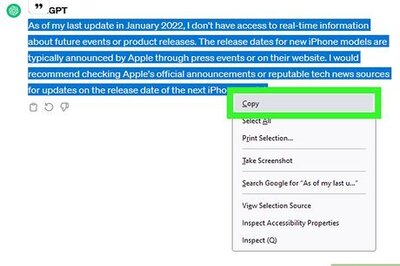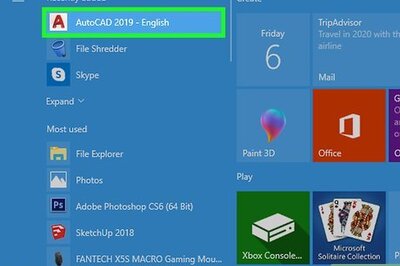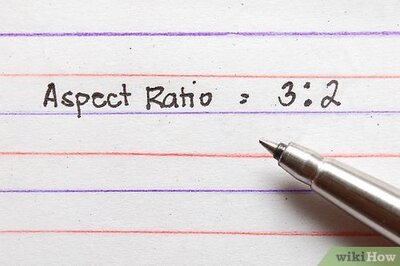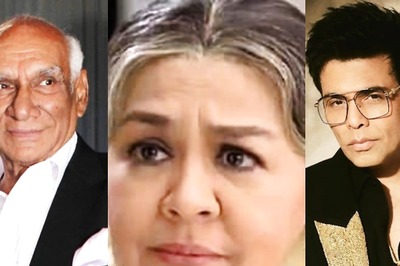
views
What is “Viva La Vida” by Coldplay about?
“Viva La Vida” is a song about a ruler who is being overthrown. At the end of his reign, the fallen king reminisces about the influence he used to wield, while also acknowledging the fleeting nature of power. He expresses pain and regret about the end of his rule, but as revolutionaries call for his death, he ultimately accepts that his fate is unavoidable.
What inspired “Viva La Vida?”
The song may be inspired by King Louis XVI and the French Revolution. King Louis XVI was the last king of France before the French Revolution, when he was imprisoned and ultimately sentenced to death. As he approached the guillotine for his public execution, he attempted to make one final speech to the crowd, but a loud drumroll drowned out his words. Many people believe that “Viva La Vida” imagines the lost speech that King Louis would have given right before his execution. The album cover, which is a portion of the painting “Liberty Leading the People” by the French artist Eugène Delacroix, also seems to support this theory. The painting depicts revolutionaries fighting for freedom, with a female figure (presumably Liberty) waving the French flag near the center. Some people, however, believe that “Viva La Vida” is an exploration of revolution and the impermanence of power in general, not just in relation to Louis XVI.
The title “Viva La Vida” itself was inspired by a Frida Kahlo painting. Frida Kahlo, who was an incredibly influential Mexican painter in the 20th century, inscribed the words “viva la vida” on her last work before she died. Translated from Spanish, the phrase means “long live life.” Speaking about the title, Chris Martin (the lead singer of Coldplay) said he was inspired by Kahlo’s boldness and ability to find beauty in the midst of her struggle with illness and chronic pain.
Breakdown of Lyrics in “Viva La Vida”
“I used to rule the world / seas would rise when I gave the word / now in the morning I sleep alone / sweep the streets I used to own.” The opening lines of the song immediately illustrate the king’s reversal of fortunes. He used to be the most powerful person in the world—armies would rise up and people would do his bidding at the snap of his fingers. Now, he’s a completely powerless person in the kingdom he used to rule.
“I discovered that my castles stand / upon pillars of salt and pillars of sand.” In these lines, the fallen king reflects on the fact that his reign was actually fragile and temporary, no matter how powerful and untouchable he felt at the time. His monarchy crumbled when the revolutionaries challenged him, just like a castle would crumble if it was built on an unstable foundation of salt or sand. This line is also an allusion to the story of Lot’s wife in the Bible. According to the story, God instructs Lot and his wife not to look back as they escape the burning cities of Sodom and Gomorrah, but Lot’s wife does look back, and as a consequence she’s turned into a pillar of salt. With this in mind, the line may also be commenting on the pain of reflecting (or “looking back”) on something as it all comes crashing down.
“Revolutionaries wait for my head on a silver plate.” This line is another strong clue that “Viva La Vida” is inspired by the death of King Louis XVI during the French Revolution. King Louis himself was in fact sentenced to death by revolutionaries, who essentially called for his “head on a silver plate.” He was killed using the guillotine, the French execution method that was infamously used to cut off aristocrats' heads.
“I hear Jerusalem bells a-ringin’ / Roman cavalry choirs are singin’.” In these lines, the doomed king compares himself to Jesus as he’s waiting to be crucified. He imagines Jesus hearing the bells of the city of Jerusalem and the Roman army coming for him, just like the king himself is hearing the revolutionaries as they close in.
“For some reason I can’t explain / I know St. Peter won’t call my name.” According to Christian tradition, St. Peter is the angel guarding the gates of heaven. In these lines, the fallen king seems to acknowledge that he made mistakes and acted immorally during his rule, so he’s aware that St. Peter won’t be welcoming him in through the pearly gates of heaven when he passes away. This is one place where the song notably differs from the real history of King Louis XVI. Although he wasn’t able to make a full speech at the time of his execution, he did say the words, “I die innocent. I pardon my enemies and I hope that my blood will be useful to the French.” With this in mind, it seems like the real King Louis wasn’t feeling quite as reflective or penitent as the fictional king in “Viva La Vida.”
Release and Reception of “Viva La Vida”
“Viva La Vida” is one of Coldplay’s most successful and beloved tracks. It was very popular when it was released in 2008, even reaching the #1 slot on the Billboard Hot 100 chart. The song also enjoyed critical acclaim, earning Coldplay the award for Song of the Year at the 2009 Grammys. In the years following the track’s release, it has remained one of Coldplay’s most appreciated and well-known songs, and it currently has over 2.5 billion streams on Spotify.
Other Songs to Check Out if You Like “Viva La Vida”
“Clocks” by Coldplay If you’re looking for another Coldplay song with a beautiful, epic-sounding instrumental arrangement, you should definitely check out “Clocks.” The song features one of the most recognizable and beautiful piano melodies of Coldplay's career, and it has a big, sweeping feel, similar to “Viva La Vida.” The lyrics are also similarly introspective and metaphorical. For example, in the opening lines, Martin sings, “The lights go out, and I can’t be saved / tides that I tried to swim against / have brought me down upon my knees.”
“Take Me to Church” by Hozier “Take Me to Church” has a very different subject matter from “Viva La Vida”—it’s about a romantic relationship, not a king being overthrown—but the two do have one major thing in common. Their lyrics feature several allusions to Christianity and the Bible, so if you appreciated these references in “Viva La Vida,” you might enjoy “Take Me to Church” too!
“Some Nights” by Fun “Some Nights” by the band Fun is a great choice if you’re looking for another moving, epic-sounding song. It features powerful vocals and choral-sounding harmonies, plus a drum-heavy instrumental arrangement that gives it a very big and intense feel, just like “Viva La Vida.”

















Comments
0 comment